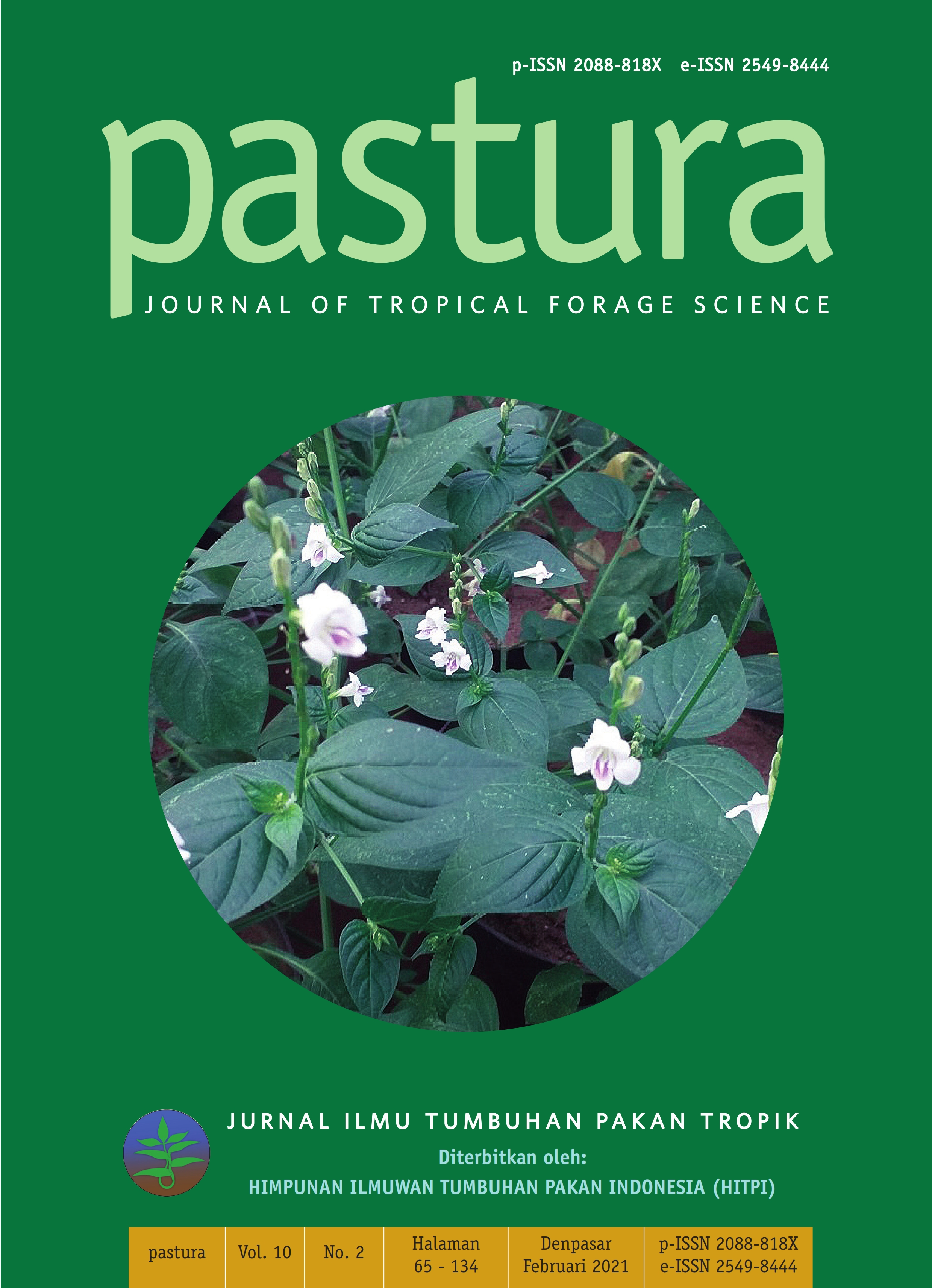CHEMICAL QUALITY OF COMPLETE RATION BISCUIT USING SAGO PITH AND RICE BRAN
Abstrak
The objective of this study was to determine the chemical quality of biscuit using sago pith
and rice bran as feed stuff. Sago pith, chopped elephant grass, rice brand, lamtoro leaves and
water were used. The method conducted by using complete randomized design with 5 treatments
were P1 (25% sago pith + 5% rice bran), P2 (20% sago pith + 10% rice bran), P3 (15% sago pith
+ 15% rice bran), P4 (10% sago pith + 20% rice bran), and P5 (5% sago pith + 25% rice bran).
Each treatment consisted of 5 replications. The results showed that the use of sago pith up to 25% and 5%
rice bran (treatment P1) had the highest water content was 7.14%, the lowest crude protein was 10.19%, the
lowest crude fat was 1.72%, and the highest BETN content was 57. 53%. In contrast, the use of rice bran
which was higher up to 25% and 5% sago pith (treatment P5) had the lowest water content of 6.09%, the highest crude protein was 11.99%, and the highest crude fat was 3.35%. It can be concluded that chemical
quality of P5 is higher than the others because of high protein and low water and lipid contents.
Key words: sago pith, rice bran, chemical quality, complete ration biscuit
##plugins.generic.usageStats.downloads##
Authors who publish with this journal agree to the following terms:
- All articles published by Pastura Journal Of Tropical Forage Science are made available under an open access license worldwide immediately. This means everyone has free and unlimited access to the full-text of all articles published in Pastura Journal Of Tropical Forage Science, and everyone is free to re-use the published material given proper accreditation/citation of the original publication. Open access publication is supported by authors' institutes or research funding agency by payment of a comparatively article processing charge for accepted articles (See Author Fees). Pastura Journal Of Tropical Forage Science publish articles under the Creative Commons Attribution License.
- Authors are able to enter into separate, additional contractual arrangements for the non-exclusive distribution of the journal's published version of the work (e.g., post it to an institutional repository or publish it in a book), with an acknowledgement of its initial publication in this journal.
- Authors are permitted and encouraged to post their work online (e.g., in institutional repositories or on their website) prior to and during the submission process, as it can lead to productive exchanges, as well as earlier and greater citation of published work (SeeThe Effect of Open Access).





